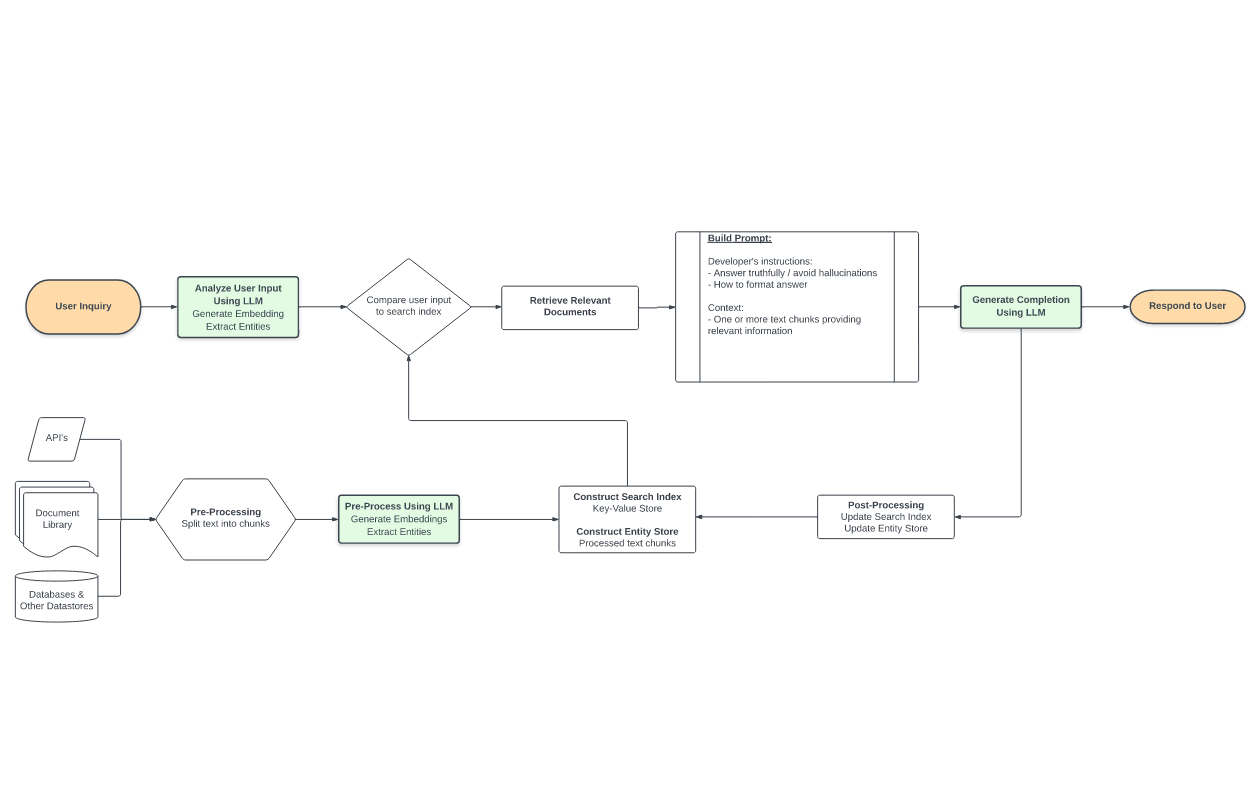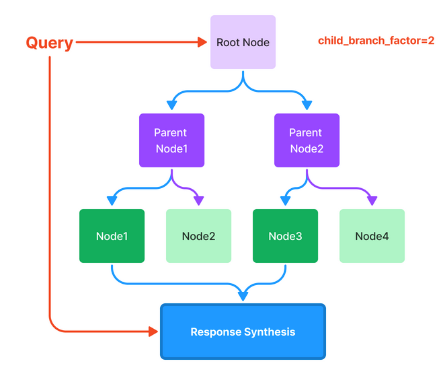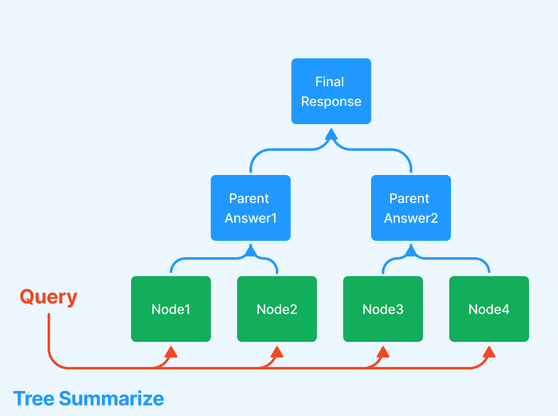Knowledge Retrieval Architecture for LLM’s §

Highlights §
- there are instances in which you want the language model to generate an answer based on specific data, rather than supplying a generic answer based on the model’s training set. (View Highlight)
 (View Highlight)
(View Highlight) (View Highlight)
(View Highlight)- Retrieval-augmented generation a) retrieves relevant data from outside of the language model (non-parametric) and b) augments the data with context in the prompt to the LLM. (View Highlight)
- a typical prerequisite is to split text into sections (for example, via utilities in the LangChain package), then calculate embeddings on those chunks. (View Highlight)
- when a user submits a question, an LLM processes the message in multiple ways, but the key step is calculating another embedding - this time, of the user’s text. (View Highlight)
- This semantic search is based on the “learned” concepts of the language model and is not limited to just a search for keywords. From the results of this search, we can quantitatively identify one or more relevant text chunks that could help inform the user’s question. (View Highlight)
- Finally, we provide the relevant information from which the language model can answer using specific data. In its simplest form, we simply append (“Document 1: ”+ text chunk 1 + “\nDocument 2: ” + text chunk 2 + …) until the context is filled. (View Highlight)
- . Embedding this document and searching for relevant (real) examples in the datastore retrieves more relevant results; the relevant results are used to generate the actual answer seen by the user (View Highlight)
- Vector Store Index - This is equivalent to the simple design that I explained in the previous section. Each text chunk is stored alongside an embedding; comparing a query embedding to the document embeddings returns the k most similar documents to feed into the context. (View Highlight)
- • Tree Index - This is extremely useful when your data is organized into hierarchies. Consider a clinical documentation application: you may want the text to include both high-level instructions (“here are general ways to improve your heart health”) and low-level text (reference side effects and instructions for a particular blood pressure drug regimen). There are a few different ways of traversing the tree to generate a response, two of which are shown below.

 (View Highlight)
(View Highlight)

(View Highlight)
(View Highlight)

 (View Highlight)
(View Highlight)